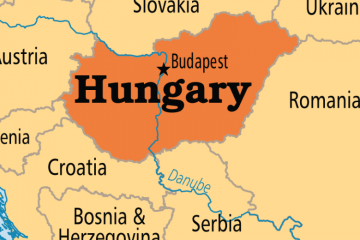Some experts, such as Micah Zenko, have suggested that any U.S. decision to give (very limited) weapons to Ukraine would have either no effect or a highly negative one by escalating the conflict. But non-lethal aid, others argue, could help reduce civilian casualties in the region by allowing the Ukrainian military to operate more safely.
In a recent Brookings Institution report titled, “Preserving Ukraine’s Independence, Resisting Russian Aggression: What the United States and NATO Must Do,” former Under Secretary of Defense Michele Flournoy; retired four-star Air Force Gen. Charles Wald; Steven Pifer, a current Brookings Senior Fellow and former U.S. Ambassador to Ukraine and others make the case for expanded aid for Ukraine, based on conversations with Ukrainian military officials.
Several of the report’s authors visited the front lines of the ongoing fighting in Ukraine and spoke directly with the commanding officer at Kramatorsk in Donetsk, about 40-50 km from the line of contact with the Russian-backed separatist fighters.
“What we got was a very professional briefing of the military situation in Eastern Ukraine… then they gave us a presentation on what would be the specific things that, if the U.S. were to provide more military assistance, what would be of particular value,” Pifer told Defense One. “We looked at what the Ukrainians said and asked, ‘Does this make sense.’ Most of us concluded that it did in terms of the gaps that they now face.”
While the request from Ukrainian military leaders did call for light anti-armor missiles, specifically Javelins, that could be used against a tank, it consisted primarily of other, less dangerous items, such as armored Humvees, drones for reconnaissance and intelligence gathering, and secure communications equipment and jammers to stop Russian drones. The most important item on the list was, perhaps, anti-tank radar.
Give Them Radar
More than 70 percent of Ukraine’s military losses come from rocket fire, according to the report, which relies on figures drawn from conversations with Ukrainian military leaders. That suggests that better missile and rocket tracking could play a huge role in changing the battle dynamic on the Russian-Ukrainian border.
The U.S. has already given Ukraine some rocket radar equipment for use against mortars. But what Ukrainian military officers are seeking is the aid of counter-battery radar that can operate at the same range as the rockets that separatists are lobbing into Ukraine. “That would allow the Ukrainian military to pinpoint the origin of both attacking artillery and attacking rockets,” Pifer said.
One example of a medium- to long-range radar capable of spotting incoming Russian rockets is the AN/TPQ-37 Firefinder Weapon Locating System, produced by Thales Raytheon and originally designed by Hughes aircraft. The AN/TPQ-37 is a big truck-based radar that runs off of a 60 kW generator and can detect enemy rockets at 50 kilometers (30 km for artillery.)
It’s the kind of device that could be “very valuable” to the military in Ukraine by allowing Ukrainian forces to quickly pinpoint the origin of incoming rockets and then take out separatist positions in response.
More importantly, Pifer said, it could also “reduce civilian casualties to the extent that the Ukrainians can make their fire more accurate, it would bring down the number of civilians who get caught [in crossfire.]”
The United Nations has said that 5,400 civilians have died as result of the conflict in Ukraine, with an additional 1,200 combatants killed. Some coverage out of Russia is placing the number at 10 times that, with closer to 50,000 dead.
Better targeting could meliorate casualties no matter what the number. But other nonlethal equipment could also play a constructive role in providing situational awareness, showing what assets are where.
Drones and Counter-Drones
“Russian and separatist forces are using drones so [the Ukrainian military] is looking for some kind of electronic counter-measures to jam those. And, again, they’re looking for drones of their own so that they could have the sort of tactical awareness to know what is going on the other side of the line of contact,” Pifer said.
What sort of non-lethal drones could Ukraine deploy in a place like Donetsk? The most useful Unmanned Aerial Vehicles, or UAVs, will be those that offer a counter-balance to the intelligence, surveillance, and reconnaissance, or ISR, assets that the Ukrainian separatists, backed by Russia, are bringing to the conflict.
Russia reportedly has more than 500 drones, one of the largest drone fleets in the world. During the 2014 Winter Olympics in Sochi, Russia deployed several ZALA 421-0 and Gorizont-Air-S100 drones to watch protestors and crowds. They have reportedly bought several BirdEye 400 UAVs, Searcher Mk.2 as well as several I-View 150s from Israel Aerospace Industries. These are relatively small drones compared to the big (66-foot wingspan), armed Reaper drones that the United States flies over Syria and Iraq.
If NATO or the United States wanted to send their own drones they have a variety of options that might be small and nonthreatening enough to avoid provoking international ire. Last May, NATO forces staged a series of exercises in Norway, part of a series of trials called Unified Vision 2020, to test ISR equipment and capabilities. The tests included some novel drones like the 3 meter-wide Italian-made STRIX-C. It’s the sort of drone that’s practically a toy but could still be useful in the current situation (which not coincidently looks a lot like the Unified Vision 2020 scenarios). Unarmed Reapers, however, could do much more to counter separatist drone-based ISR capabilities.
In terms of communications and jamming equipment, companies like General Dynamics and others manufacture a variety of systems that could easily be put on trucks to provide what’s called mobile reconnaissance and jamming to bring Ukrainian capabilities a bit closer to those of Russia.
Pifer said more equipment aid to Ukraine could do much to increase the costs of the conflict for Russia. But a few drones, some radios, and a radar truck won’t by themselves end the war. “No one thinks the Ukrainian army would beat the Russians,” he said.
The United States has already promised some equipment to Ukraine in the form of money, night vision goggles, tents, armored trucks, and so on, but has had trouble meeting those assurances.
If American leadership can follow through on its commitments and build upon them, Pifer speculated that the U.S. would inspire Canada, Lithuania and even the United Kingdom to do the same. There’s no guarantee of that. UK Foreign Secretary Philip Hammond recently said that the UK did not intend to send lethal arms to Ukraine “at this time.”
To Pifer, that suggests, “they left the door open.”
As to the charge that aiding Ukraine would further escalate tension in the region, Pifer answered simply, “It’s escalating regardless of what we do … there’s risk if we do this. The risks of doing nothing are greater.”





Comments